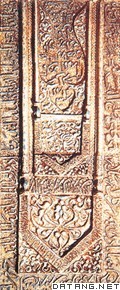1) consciousness of calligraphy


书法意识
1.
Through the analysis of the relationship between the consciousness of calligraphy and script designing, this paper demonstrates that the script designing is influenced by the pattern of written character, artistic style and aesthetic approach.
认识是设计的基础 ,通过对书法意识与字体设计关系的剖析 ,得出书法的字形特征、风格、审美是影响字体设计的三个主要方面。
2) the consciousness of reading


读书意识
3) Writing awareness


书写意识
4) library consciousness


图书馆意识
1.
Starting from the concepts of the library consciousness, this paper expounds the determination of subjects of the library consciousness, analyzes the factors influencing the library consciousness, and probes into how to cultivate the library consciousness of students.
从图书馆意识的概念入手,阐述了图书馆意识主体的认定,分析了影响图书馆意识的因素,并探讨了如何培养学生的图书馆意识。
2.
It was to discuss what library consciousness and library consciousness of citizen was in information society and how to establish them.
论述了图书馆意识及信息社会公民的图书馆意识,提出了如何确立信息社会公民的图书馆意识。
3.
In the light of the situation of that the library consciousness of Chinese people is poor,this paper advances that the library consciousness can be improved with the TV public service advertisement,and expounds the advantages of TV public service advertisement.
针对我国广大民众图书馆意识薄弱的状况,提出可以通过电视公益广告来加以改善,提高民众的图书馆意识,论述了电视公益广告的优势。
5) consciousness of library


图书馆意识
1.
This paper expounds that to cultivate the students consciousness of library and let them learn how to use library is an important chain in realization of the aim of education reform.
谈论了要实现教育改革目标,培养学生的图书馆意识,让学生学会利用图书馆,是不可忽视的重要环节。
6) calligraphy images


书法意象
1.
This author makes a research into calligraphers′ creation from objective existences to calligraphy images, and into people′s association teadency from calligraphy images to abstractions from subjective world and objective existences.
从研究分析古代有关书法意象的论述入手 ,对有关理论进行梳理剖析 ,探寻了书家由物象到书法意象的取向和人们由书法的意象形式到主观内宇宙和有灵世界各种物态及生命形象的联想方
补充资料:阿拉伯书法
| 阿拉伯书法 Arabian calligraphy 伊斯兰时代的阿拉伯文字书写艺术。起源于手抄本的《古兰经》。阿拉伯书法具有悠久的历史,而且字体繁多。一般认为,11世纪是划分阿拉伯书法时期的界线,之前为古体时期,之后为新体时期。古体时期的阿拉伯书法以库菲体出现最早,其书法笔画纵向,线条直而棱角分明,有一定装饰味。9~10世纪又一分为二,出现了叶状库菲体和花状库菲体,皆因笔画末端似棕叶状和饰有花头纹而得名。另外,还有一种繁琐而规范的手写体及印刷体,以结体工整圆润,笔画舒展流畅为其特征,有纳斯黑体和斯尔希体等不同字体。11世纪之后,在古体书法继续流行的同时,又相继出现了4种新的字体,即:①穆哈卡克体,风格清秀,笔画纤瘦;②拉伊哈尼体,风格活泼奔放,笔画末端呈鼠尾状;③鲁库阿体,用于书信的书写及手抄本通俗读物;④塔乌奇体,风格庄重大方。另外,还有一些字体流行,如:马格里比体,以活泼潇洒,节奏分明著称;纳斯塔里克体,笔画更加纤细流畅;希卡斯塔体,笔画比较繁琐;加里体,用于公文书写,以及专门用于苏丹签名,形如装饰绘画的图画文字的花字体。阿拉伯书法非常重视文字本身的形式美,因此其书法讲究节奏感、装饰性和纹样。由于是用硬笔在羊皮纸上自右而左横向书写,所以笔画简洁流畅,具有一种曲线的效果。
|
说明:补充资料仅用于学习参考,请勿用于其它任何用途。
参考词条
